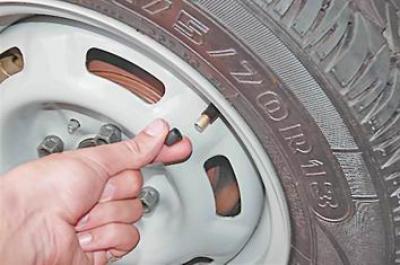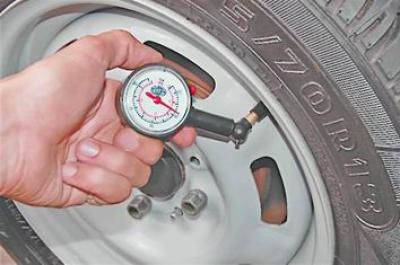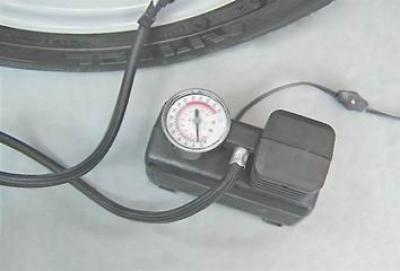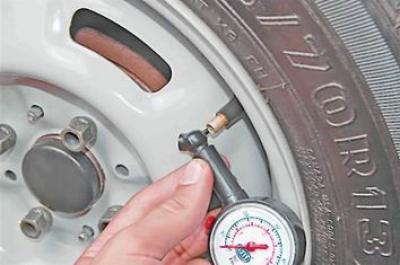Tip: Check the air pressure in your tires every 500 km (500 km).
The air pressure in a car tire is not constant. When the ambient temperature rises, the pressure in the tire increases, and when it decreases, it decreases. With small fluctuations in ambient temperature, tire pressure changes slightly. If the temperature difference reaches 10-15°C, then it is necessary to check and, if necessary, bring the pressure in the tires to normal.
The pressure in the tire also increases while the car is moving at high speed and frequent maneuvers. In winter it is almost imperceptible. Cold air and low road surface temperatures prevent the tire from heating up. During the summer period, the oncoming flow of warm air does not cool the tire well, and its temperature begins to rise. Additional heating of the tire comes from the road surface heated by the sun's rays. All this can increase tire pressure by 0.2-0.3 bar (20-30 kPa).
Warning! Tire pressure is only measured when the tire temperature is equal to the ambient temperature.
To complete the work you will need:
- manometer;
- compressor or tire pump.
Execution sequence
1. We prepare the car for work (see "Preparing the car for maintenance and repair").
2. Turn off the protective cap of the nipple.

3. Firmly press the pressure gauge to the end of the nipple and hold it in this position for 1-2 s, after which we disconnect the pressure gauge from the nipple.

4. We return the pressure gauge needle to zero and repeat the test.
5. If the tire pressure is lower than 0.19Mpa (1.9 bar), then we pump it up with a pump or compressor.
Note: When pumping, check the pressure on the pressure gauge of the pump or compressor.

Warning! When inflating, the pressure gauge shows the pressure not in the tire, but in the air supply hose. To determine the true pressure in the tire, it is necessary to interrupt the inflation process.
6. If the pressure in the wheel tire is higher than normal, then we bleed the air by sinking the nipple axis with a special spike on the pressure gauge body or with a screwdriver blade. We release air from the tire in small portions with an intermediate pressure check.

7. We screw a protective cap onto the nipple.
8. Similarly, we check the pressure in the remaining wheels of the car.
